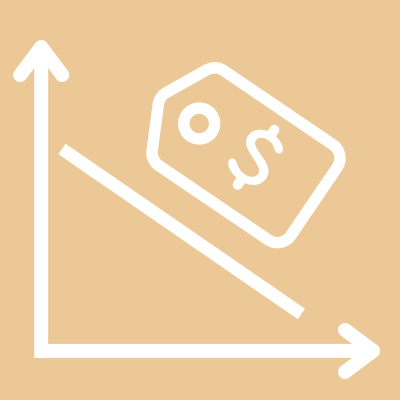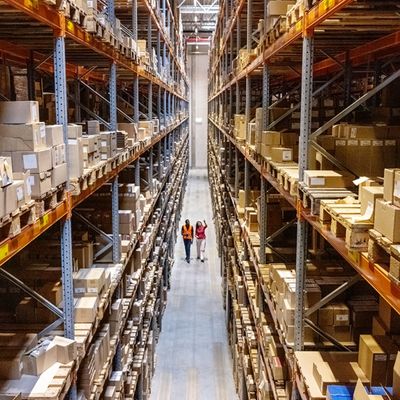Demand
Describe the demand side of the market.
{{searchResultSnippet}}
 Back to All
Back to All

This video assignment describes factors that influence how elastic, or inelastic, demand for a good or service is. These include whether the item is a necessity or a luxury, how much of your income you give up to buy it, the availability of close substitutes, and time.
The first factor that influences the of price elasticity of demand is whether the good is considered a necessity or a luxury. Necessities are more inelastic than luxuries. So, if you consider the natural gas that runs your furnace and heats your home in the winter a necessity, you will likely keep buying approximately the same amount even if the price goes up. You may turn the thermostat down a little lower, but you will likely reduce the quantity you demand by a smaller percentage than the percent increase in the price. As it turns out, other consumers react in a similar way. In economic terms, the demand for natural gas in the winter tends to be relatively price inelastic.
But what about cowboy boots? For me, cowboy boots are not a necessity. So, if the price of cowboy boots were to rise, the quantity I demand would fall. In fact, my quantity demanded would fall a lot. If others behaved similarly, we might assume the demand for cowboy boots is relatively price elastic. When the price goes up, the quantity demanded is very responsive. Relatively speaking, it goes down a lot.
A second factor is the portion of your income you give up to buy something. Anything you purchase takes a portion of your income. It may be a small portion or a large portion.
Say that for dinner you regularly eat steak, followed by an after-dinner mint. While you consider both an essential part of a good meal, one important difference is the price relative to your grocery budget. Steak tends to be much more expensive than mints.
In fact, if the price of steak and mints both doubled in price, you’d likely continue to buy mints, but perhaps choose something else as your main course. The demand for steak tends to be more price elastic than the demand for after dinner mints.
The third factor of price elasticity is the availability of close substitutes. A good with few close substitutes tends to be more inelastic than those with many substitutes. Why?
Well, when the price of that good rises, you may start looking for substitutes to purchase to avoid paying the higher price. The more substitutes there are, the less likely you—and other people—are to buy the good at the higher price.
When thinking about price changes, it’s important to distinguish between a change in the price of a specific product and a change in the price of a product category.
For example, consider shoes in general, a product category. If the price of shoes rises—that is, all shoes cost more—there are few substitutes for shoes so you, and most other consumers—will likely still buy shoes in spite of the price increase. Using economic terms, consumers will not be very sensitive, or responsive, to price changes—so the demand for shoes will likely be price inelastic. It will stay relatively the same.
However, consider the price of a specific good within the category—say black Nike basketball shoes. For example, imagine the price of black Nike basketball shoes were to increase. Because there are many substitutes— other brands, colors, and styles of shoes—you will likely be more sensitive, or responsive, to a change in the price of that specific shoe. In economic terms, consumers will likely be very sensitive, or responsive, to a change in the price of this specific good. So, demand for this specific shoe will likely be more price elastic than for shoes as a category.
A fourth factor of price elasticity is time. All goods tend to be more elastic in the long-run than in the short run. Why?
Time allows people to find substitutes. So, if the price of gasoline were to increase, in the short-run you would likely decrease the quantity you demand, but only slightly. You would still likely have the same commute to work or school and the same car as you had before the price increase. Realistically, it could be hard to quickly reduce the quantity of gas you use.
However, as time passed, if gas prices stayed high, you might find a carpool or buy a more fuel-efficient car. So, while it might be difficult to adjust consumption of certain goods immediately when prices increase, with time, you —and many others—are likely to find other options.
Now let’s see if you can identify whether a good is likely to be elastic or inelastic and which factor of elasticity is likely to have the biggest effect.
#1 Diet Frizzy Cola, a type of carbonated beverage. Answer: Demand is Price Elastic. Why? – Because there are many substitutes for Diet Frizzy Cola—a specific brand of soda pop.
#2 A meal at an expensive restaurant. Answer: Demand is Price Elastic. Why? –Because you are giving up a large portion of your food budget.
#3 Auto repairs needed on your only car. Answer: Demand is Price Inelastic. Why? Because it could be a necessity if you rely on your automobile to get to work or school.
So, how did you do? Elasticity can sometimes be tricky to understand. But there are some people who might find it especially important to understand the price elasticity of demand. In part three, you’ll see how price elasticity of demand is applied in the real world.

Demand
Describe the demand side of the market.

Supply & Demand: How Do Markets Determine Price?
Learn about the basics of supply, demand, and market equilibrium.

Entrance and Exit Tickets for a General Economics Classroom
Short formative assessments for the general economics classroom.

Econ Lowdown Podcast Series
21 Economics audio assignments for your classroom

Sold Fast: Price Tags and the Impact on Consumer and Producer Surplus
Introduce the concepts of producer and consumer surplus and the role of price tags in decision-making.

Supply & Demand: How Do Markets Determine Price?
Learn about the value of saving, investing, and the Rule of 72.
{{resourceTitle}}
{{resourceBlurb}}